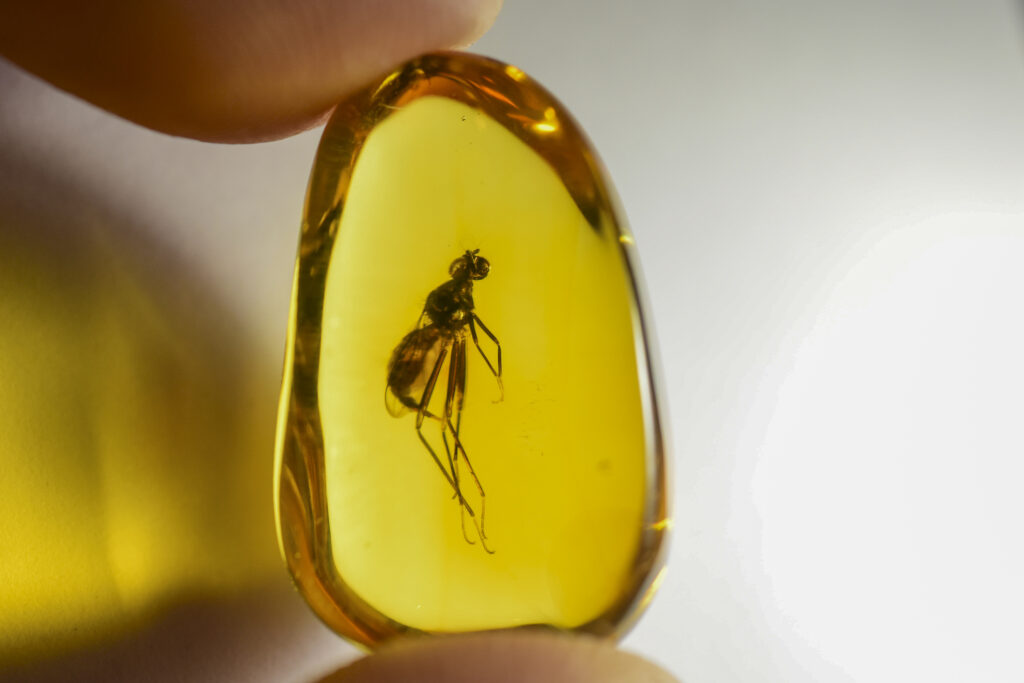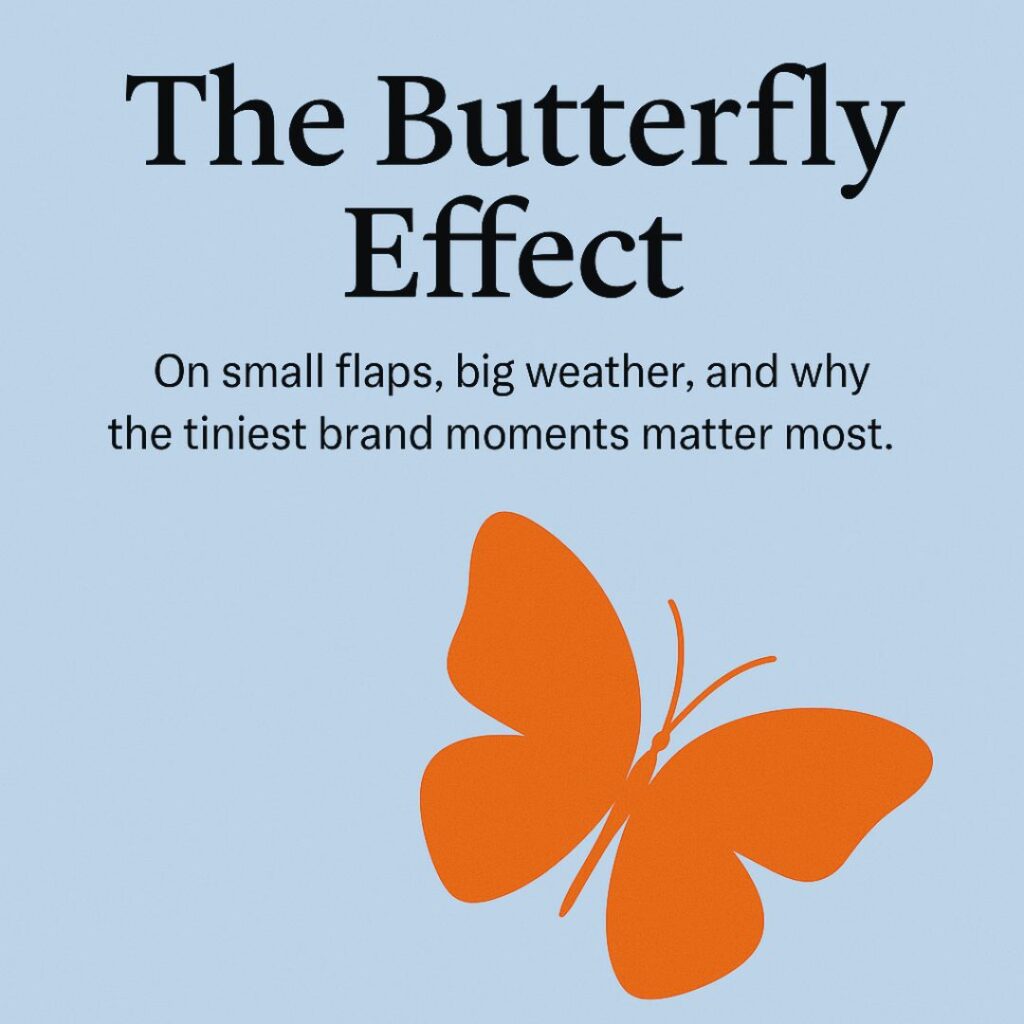The Butterfly Effect: Small Gestures, Big Weather

In 1961, meteorologist Edward Lorenz was running early computer simulations of weather patterns when he made a small change—rounding an input from 0.506127 to 0.506. To his surprise, the resulting forecast diverged dramatically from the original. This discovery led to his 1963 paper, Deterministic Nonperiodic Flow, and a poetic phrase that would eventually enter pop culture: the butterfly effect. A butterfly flapping its wings in Brazil, he suggested, could theoretically set off a tornado in Texas.
At Otherwise, we’re always exploring metaphors that dimensionalize the work of branding. And chaos theory—particularly the idea of sensitive dependence on initial conditions—offers a compelling one. The way we see it, brands, like weather systems, are complex, nonlinear, and hyper-responsive to nuance. In a world where perception is built (and broken) in microseconds, it’s often the quietest brand moments that carry the greatest weight.
Every Detail is a Lever
When we talk about branding, we’re reaching beyond logos, campaigns, and standards. We’re talking about how a brand behaves in the world—how it moves, how it listens, how it leaves traces. And in that light, the butterfly effect becomes a design principle that tells us every touchpoint matters, no matter how small. Consider these:
- The tone of a shipping confirmation
Far more than a receipt, a shipping confirmation is a reassurance. When the copy sounds human, warm, or even delightfully unexpected, it tells the customer: “We’re here, we care, and your experience matters.” A butterfly wingbeat. A ripple of goodwill. - The phrasing of a tooltip
Tooltips are micro-texts loaded with potential. A helpful phrase written with clarity and charm — rather than tech-speak or sarcasm — can shift a user’s entire mood. It’s an invisible gesture of care that shows the brand understands its role in easing complexity. - The responsiveness of a support reply
Is the reply fast? Personalized? Does it feel like someone actually read the message? This interaction might be the only direct contact a person has with the brand. How it unfolds shapes everything that follows. A few extra keystrokes — a name used, a tone matched — can convert frustration into affinity. - The moment after someone clicks “unsubscribe”
Even goodbye is a brand moment. A farewell that’s self-aware, gracious, or a touch humorous stays with people. It leaves the door open. It says: we noticed you, we respect you, and you’re welcome back anytime.
Each is a potential butterfly wing—capable of shaping perception in ways that may never be fully traceable, but are nonetheless real. In a complex, emotionally saturated ecosystem, trust is rarely built in the big, orchestrated moments. It’s accumulated—almost accidentally—through care, tone, and timing.
The Myth of the Big Moment
Most organizations still behave as though branding is about control: managing impressions through marquee moments and polished assets. But in truth, most brand perception is formed in the in-between. The moments no one put in the brief. The places no one noticed. The lines of copy written by someone outside the “brand team.” These are the chaotic fringes of the system—the places where meaning is made. And when a brand leaves those margins to chance, it becomes incoherent, hollow, or worse—forgettable. But when a brand acknowledges its own complexity, and begins to design for coherence in motion, it becomes something else entirely: alive.
Designing in a Chaotic System
Accepting that branding operates within a chaotic system doesn’t mean surrendering to randomness. It means designing with a different mindset—one that recognizes emergence, encourages experimentation, and invests in resonance. Here’s how that looks:
- Care for the micro: Small interactions hold disproportionate weight. Give them craft.
- Design for feeling, not just function: Surprise, humor, grace—these leave marks.
- Equip the periphery: Everyone, not just the CMO, is building the brand. Support that.
- Curate conditions, not just outcomes: You can’t script loyalty, but you absolutely can invite it.
In this framework, branding is less about crescendo and more about the ripple.
When the Butterfly Flaps
The challenge—and opportunity—of modern branding is that you never know which moment will matter most. It might be a bug report. A help center article. A product detail page. And while you can’t predict the exact outcome of any one interaction, you can build a sensitive, reflexive system that’s ready. Beneath it all, if you believe that the butterfly is always flapping its wings, you will also believe that someone is always paying attention. And what seems like nothing today just might shape the storm tomorrow.








